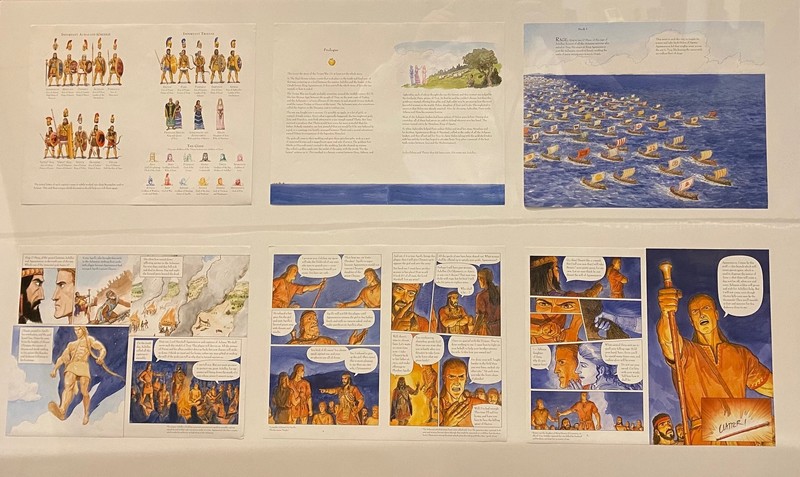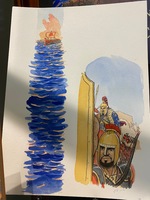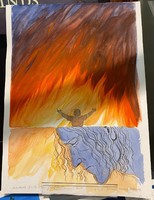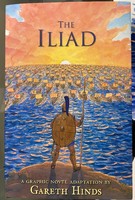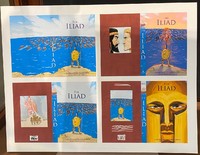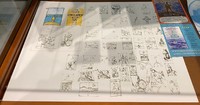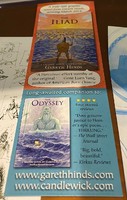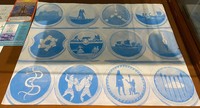The Iliad
In his epic poem The Iliad, ancient Greek poet Homer relates significant events during the final year of the Trojan War and the Greek siege of the city of Troy, most specifically, the battles between King Agamemnon and the warrior Achilles. The War began because Paris, son of King Priam of Troy, kidnapped Helen from Menelaus, a Greek and brother of Agamemnon, King of Mycenae. Although The Iliad focuses on just a few weeks in a ten-year conflict, the poem alludes to previous events which help us understand the full tale of the Trojan War.
Each adaptation of a classic to a graphic novel presents its own set of challenges. In The Iliad, Hinds worked to resolve these predicaments:
Complexity
In order to help the reader make sense of the many characters and the context Homer expected his audience to know before reading The Iliad, Hinds includes a prolog, map, and a cast of characters showing not only what each character looks like, but their distinctive helmets, shields and armor. In addition, each warrior’s armor has a stylized initial letter of their name somewhere in the chest area.
Continuity
To make sure all the details of costumes were correct all the way through the book, Hinds and three eagle-eyed proof readers went through the book following each character in turn and noting if a sword belt or a shoulder plate was wrong in a panel. Hinds then corrected hundreds of these small errors digitally.
Positive press coverage followed the publication of Hinds’ adaptation. One such example comes from the Wall Street Journal:
“Magnificent…..Mr. Hinds has had to trim a great deal from Homer’s tale, but he retains most of the best-known scenes, much of the violence and poetry, and all of the pathos. The graphic-novel form works well to give us a sense of the cinematic vastness of the conflicts of gods and men, of the strange beauty of a thousand fires winking on the plain at night, of Bronze Age warriors cutting their way into each other ‘like reapers who start from either end of a rich man’s field and with sharp scythes bring the barley tumbling down in armfuls.’… Those who know the epic will find an engrossing and rewarding account: gory, affecting, unforgettable.”
A goal of the illustrator is to make classic works of literature accessible to readers who might otherwise find them difficult. To this end the publisher prepared Teacher’s Guides which can be found on Hinds’ web site (garethhinds.com).
The Iliad selected pages
The Iliad, Introduction to page 7. This sequence sets up the central conflict of The Iliad – as well as the information Homer’s audience would already have known when they were listening to The Iliad (which was performed as an oral epic for hundreds of years before it was written down.) Homer’s audience would have known all the major heroes of the Trojan War, as well as the origins of the war itself. This is necessary information to understand the plot as well as the nature of the conflict between Achilles and Agamemnon.
To view this or any other exhibit objects in more detail, click on its thumbnail below.

